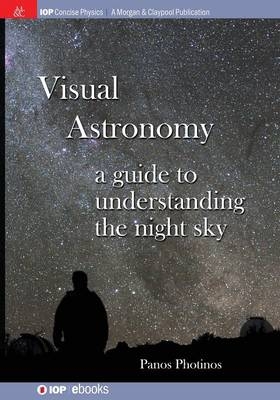
Visual Astronomy
Morgan and Claypool Life Sciences (Verlag)
978-1-62705-480-5 (ISBN)
This approach provides a better understanding of the night sky and makes the material more interesting and relevant around the world, not just in North America. You don’t need any mathematical skill or technical knowledge to quickly grasp the concepts of basic astronomy, nor do you need expensive equipment to look up at the night sky and understand what you see. If you do have or can access a telescope, Visual Astronomy will teach you the fundamentals of its use and how to get the best views possible.
Links to major telescope facilities around the world; current and past space missions; links to free sky simulation applications; and ideas for observation projects make this an excellent learning tool for the new hobbyist or for teachers who wish to show their students why visual astronomy is a lifetime love for millions.
Panos Photinos has been a Professor of Physics at Southern Oregon University (SOU), USA since 1989 where he teaches Introductory Astronomy, Observational Astronomy and Cosmology. Panos completed his undergraduate degree in physics at the National University of Athens, Greece, and received his doctorate in physics from Kent State University, Kent, Ohio. He started naked-eye observations as a child in the Red Sea, and later upgraded to a pair of Merchant brass binoculars in Alexandria, Egypt, and his homeland, the island Ikaria, Greece. Ever since he has visited and stargazed from all five continents, and shared his fascination with the night sky with students of all ages. This is Panos' first book in astronomy.
Introduction
The Celestial Sphere and Apparent Motion of the Sun
Coordinate Systems
Motion and Phases of the Moon
The Planets
Comets, Meteoroids, and Meteor Showers
Constellations, Asterisms and Star Names
Star Properties
Telescopes
Appendix A: Measuring Angles
Appendix B: Measuring Distance in Astronomy
Appendix C: Time Keeping
Star Magnitude Systems and Distance Modulus
| Erscheint lt. Verlag | 21.4.2015 |
|---|---|
| Reihe/Serie | IOP Concise Physics |
| Verlagsort | San Rafael, CA |
| Sprache | englisch |
| Maße | 178 x 254 mm |
| Gewicht | 333 g |
| Themenwelt | Sachbuch/Ratgeber ► Natur / Technik ► Weltraum / Astronomie |
| Naturwissenschaften ► Physik / Astronomie ► Astronomie / Astrophysik | |
| ISBN-10 | 1-62705-480-4 / 1627054804 |
| ISBN-13 | 978-1-62705-480-5 / 9781627054805 |
| Zustand | Neuware |
| Haben Sie eine Frage zum Produkt? |
aus dem Bereich


